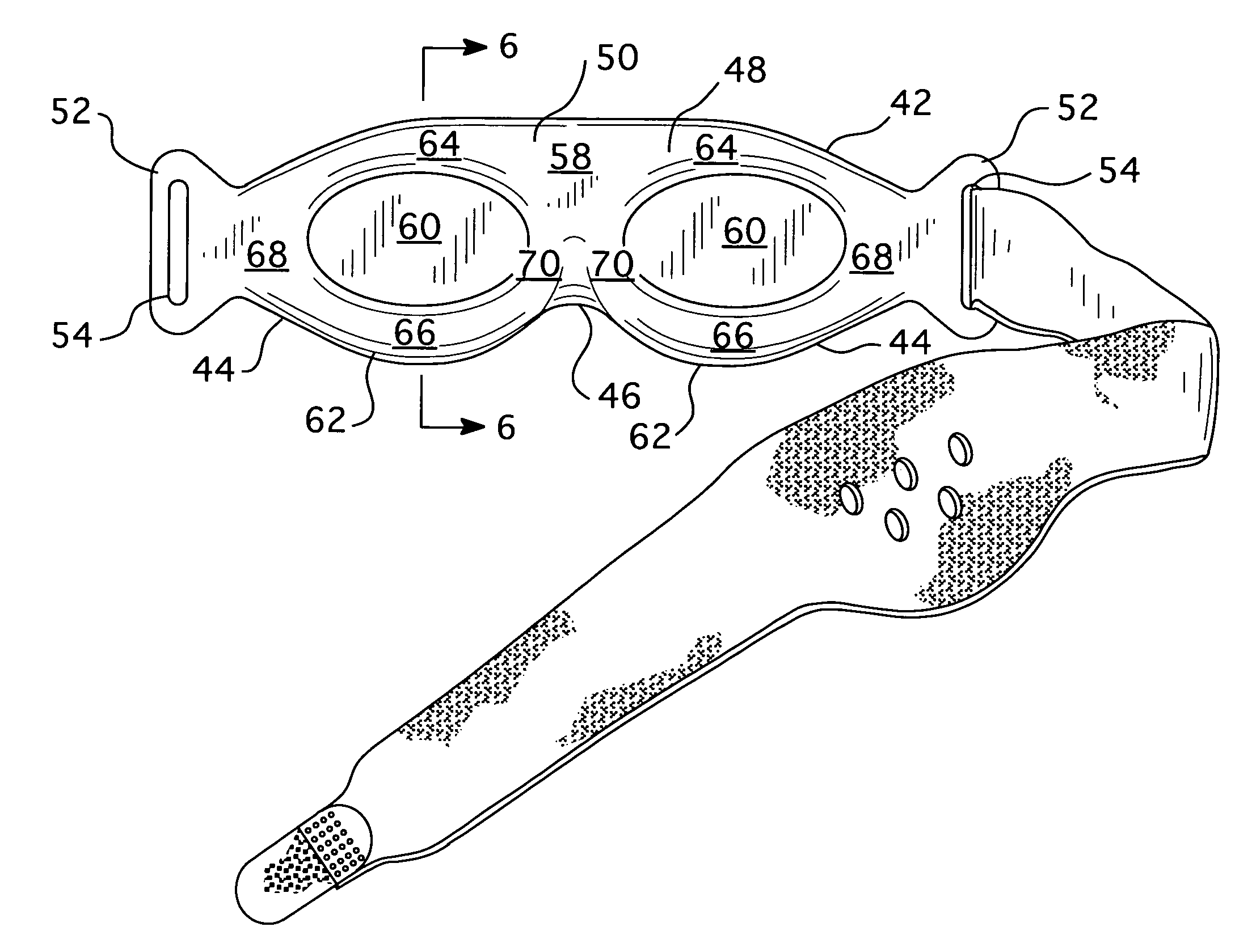Molded phototherapy goggles
- Summary
- Abstract
- Description
- Claims
- Application Information
AI Technical Summary
Benefits of technology
Problems solved by technology
Method used
Image
Examples
Embodiment Construction
[0029]FIG. 1 schematically illustrates an exemplary embodiment of phototherapy goggles 30 according to the principles of the present invention. The phototherapy goggles include an eye covering 32 attached to a headgear 34 for use on an infant 36. The eye covering is configured to shield an infant's eyes while the headgear is configured to secure the eye covering 32 in place. While this invention has been described for use with infants, the inventors recognize that the unique aspects of the present invention could also be employed with individuals of any age. As seen in FIG. 2, the headgear is wrapped around the infant's head and secured to hold the eye covering in place.
[0030]With reference to FIGS. 3 and 4, the eye covering 32 has a superior border 38 and an inferior border 40. The superior border 38 includes a pair of tapered portions 42 while the inferior border 40 includes a pair of corresponding tapered portions 44 and a nasal groove 46 to provide clearance for the infant's nos...
PUM
 Login to View More
Login to View More Abstract
Description
Claims
Application Information
 Login to View More
Login to View More - R&D
- Intellectual Property
- Life Sciences
- Materials
- Tech Scout
- Unparalleled Data Quality
- Higher Quality Content
- 60% Fewer Hallucinations
Browse by: Latest US Patents, China's latest patents, Technical Efficacy Thesaurus, Application Domain, Technology Topic, Popular Technical Reports.
© 2025 PatSnap. All rights reserved.Legal|Privacy policy|Modern Slavery Act Transparency Statement|Sitemap|About US| Contact US: help@patsnap.com



